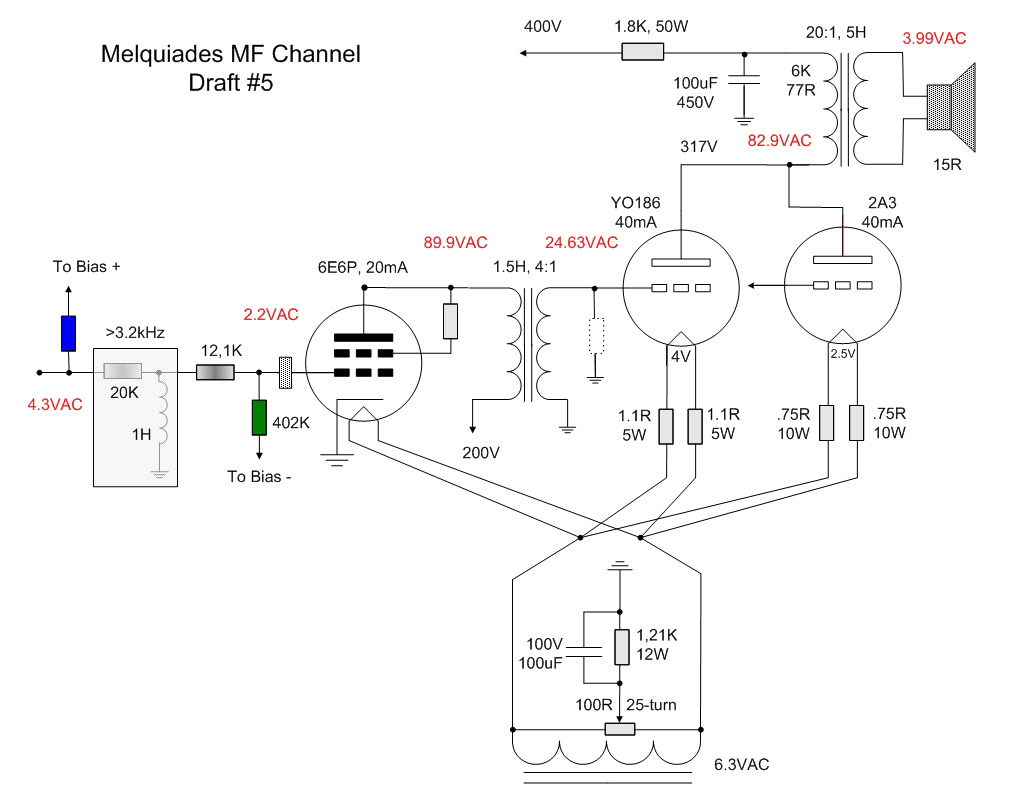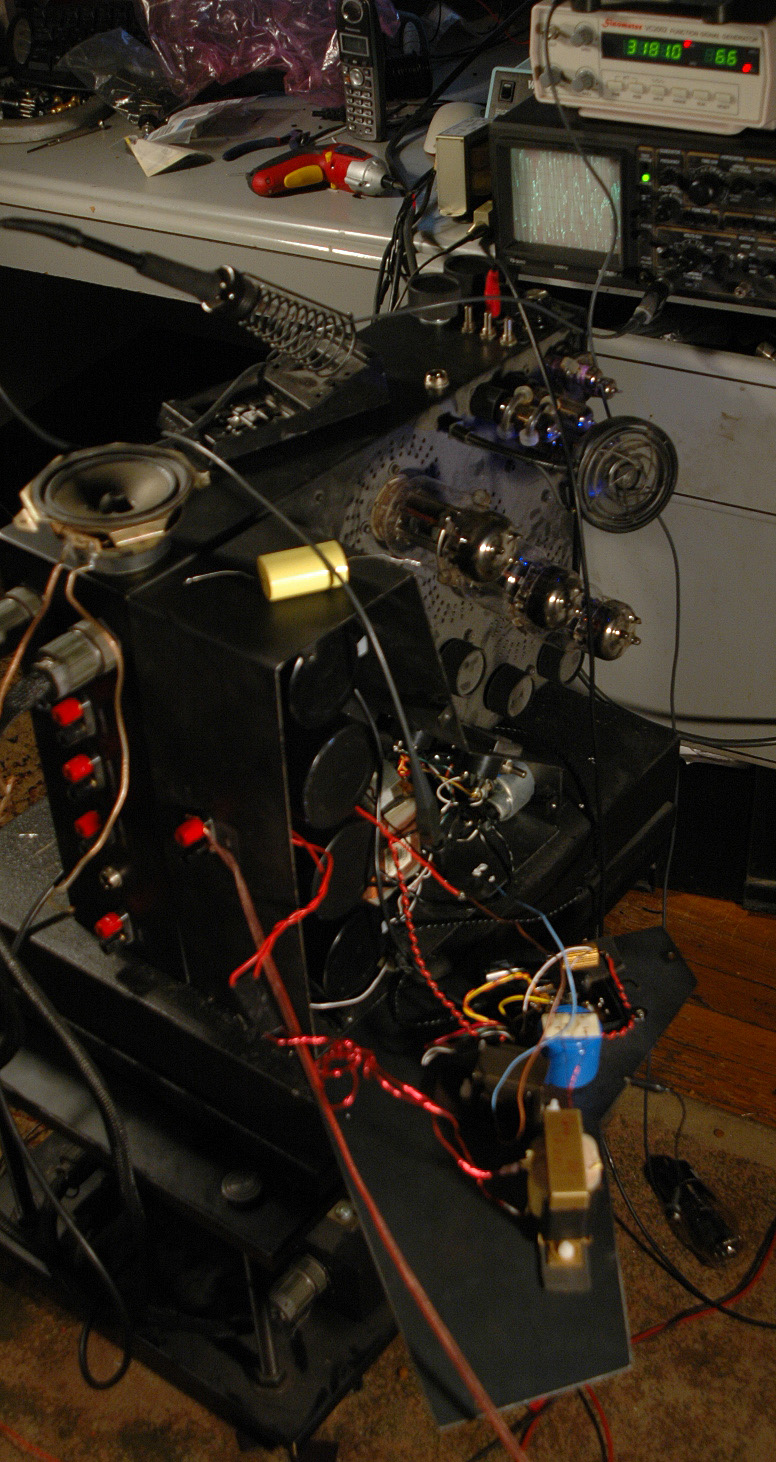Rerurn to Romy the Cat's Site
In the Forum: Melquiades Amplifier
In the Thread: Single-stage Melquiades vs. DHT amps
Post Subject: The Milq DH DSET, the further thoughts in progress.Posted by Romy the Cat on: 4/18/2009
fiogf49gjkf0d
Ok, I made some further experiments driving this time my S2 driver from Milq DH DSET. The hell of the sensitively - it was too much. So, I went for 4:1 inner-stage ratio. The result was very successful and the amp looks like was able to get more voltage in. Now it clips at higher power at bottom half (I do not remember it is voltage or current and I did not get yet which stage or what transformer clips first it will be fun to learn in future). Take a look what I have now:

The good part is that 4.3V at input is it how much my DAC outputs at -2dB digital. With this volume window of my room will fly away along with frames – I never play that loud. Even at this level I have a driver and the power stage run at half of the grid bias- very good. The bad part is that I pump a hell of a lot gain in the driver stage and then burn it in innerstage transformers. Well, it is not just do not make sense but it also have relation to my other thoughts…
My other thoughts were that I was listening today my MF channel driver from Milq DH DSET. I actually was listing the Sound.

I like Sound more then I had it with a single stage but it is also not the sound that I would like to have. I have a LOT of to say about the sound of Milq DH DSET with 2A3 and YO186 and about the DH specific but I will do it later what I will be taking about Sound. So far I am not in Sound mode but I rather looking for first an intellectual stimulating solution of my topological problem.
The subjective initial assessment of sound suggests that although the sound with DH is better but it still the same type of sound – it is gracious, polite and fabulously smooth. With the DH it has some interesting texture and other thing that I will comment about later but it is still a bit on “save side”.
As you might read in my post above I discovered recently that my elaborate Milq-biasing, and filtering crate too much impedance on the grid and consequentially too closer low-pass filer. The ugly square wave response of the driver stage proves it. So, that all make me to wonder….
Let see, the high impedance on the grid create the filer as it work with Miller capacitance. The Miller capacitance is the plate-to-grid capacitance multiplied by gain plus one. The 6E6P has 15pf and 33 times gain makes is near 500pF. The 500pF in tube and 32.1K in grid is what I have my 23kHz response and the ugly square wave. Now, I DO NOT claim that the making my MF amp faster in trims of upper frequency response is something that I need and is something that would me to feel better about sound. But it might be the case as the better square usually relates to better transients.
OK, too high capacitance too high impedance and too much gain… the answer is self-evident – I might to look for another driver stage. The 6E5P/6E6P is voltage tube but I do not need a lot of voltage to drive my DHT. If I look for a new driver then here are some requirements:
1) Good sound – it shell not be explained further.
2) Bias or 2-3V that will be left from 4-5V input voltage left after filter.
3) ability to work with fixed bias
4) 200V on plate
5) Low Miller capacitance as it still use the filter and prefabs the Milq bias
So, I was looking around and thinking about the the Russian 6N6P. The 6N6P is Russian version of 5687. Bothe tubes are wonderful sounding but the 6N6P reportedly (not my report) is better as it has more parallel plated vs. the 5687 that has it curved. The 6N6P has 2V bias that would make Milq’s grid bias to be twice lower. I would like to have it 3V to have some spare voltage but you will never know how much it will be unless you try. The 6N6P is double triode and each half has 4.4pF of input capacitance. That is very great as it 3 times lover then my current 6E6P. The 6N6P has gain of 20 that would make the total Miller capacitance of 88pF. The 88pF vs. 500pF – only that will give me way more extend response. Oh, did I tell you that I have around 50 6E6P in my storage?
http://www.goodsoundclub.com/PDF/6N6P.pdf
I do not have a decision yet. I might convert one channel of my Sun Audio prototype amp. But at this point I am opone for options…
The CatRerurn to Romy the Cat's Site